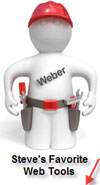Design And Why It’s More Complicated Than You Think
By
It’s easy to imagine that the process of designing a product is just about how it appears, the shape, color and so on. But there’s more to design than just the way something looks. The various people involved in commissioning, selling and buying the product are all looking for different things from the finished result. It’s the designer’s job to reconcile all of these elements to produce a product that’s attractive for the consumer, practical to use and profitable for the manufacturer.
Competing Design Elements
The problem is that everyone involved in the creation of a new product has their own agenda. A design will usually start with the manufacturer who wants a product that can be produced at a reasonable cost so that it can be sold for a profit. This will mean consideration of the materials used, the assembly process required and even packaging and shipping issues. They’ll also want to take account of on-going costs, for example how easy the product is to maintain.
At the other end of the scale the buyer of the product looks at the price but also at the style of the item and the features it offers. They’ll also be concerned with the usability of the product, any on-going costs such as energy usage and how well it does the job it was purchased for.
Satisfying all of these competing demands can be a frustrating process and designs often go through several stages on the road to a final version that can be released to market. Designs can be driven by invention, where a new technology presents an opportunity for a product. The can also be driven by demand where a product is constructed to carry out a task that competing items either can’t do or don’t do as well.
The Design Process
The initial stages of creating a design will involve a detailed analysis of all the demands involved. This can involve carrying our research to discover what consumers want from the product as well as discussing practicalities and costs with the manufacturer.
Once the analysis is complete the concept of the product should be fully understood. The designer will have a clear idea of the constraints he needs to work under. At this point different ideas can be put forward and discussed to assess their suitability for the brief.
With several ideas on the table they can be narrowed down to just a few that are the closest fit for the brief. At this stage prototypes may be built and the idea becomes a physical object for the first time. The latest technologies such as CAD and 3D printing make this less labor intensive than it was in the past but it’s still a major part of the process. Once a final prototype is agreed it can be tested to see how well it meets the brief. If problems are found then it may be necessary to return to the prototype stage to make amendments and refine the design.
You’ll see from the above that there’s a strong element of engineering involved and that design is about much more than how the product looks. In today’s electronic gadgets the design process extends to the software and user interface as they are a key factor in how easy the product is to use.
The design needs to take account of how the product will be assembled too. This means determining how the components are put together and in which order. It may even extend to the design of tooling or jigs to aid in the manufacturing process.
























